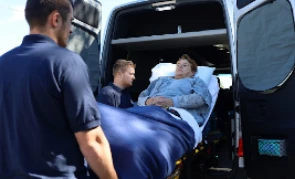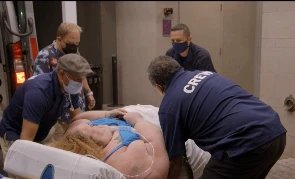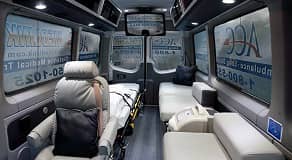There is no doubt that EMS vehicles are essential today. They help patients requiring both emergency and non-emergency medical transfers to or from the hospital. They also assist those in need of long-distance and cross-country placement.
However, there is an unseen yet imminent threat to the health of EMS staff and the patients who travel in these ambulances. It comes from global, infectious pathogens, like MRSA, hepatitis, and TB, that can be spread through the air. In recent years, Ebola and Zika viruses have gained worldwide attention because of their rate of infection. Today, the threats of the Coronavirus become eminent by the day in different parts of the world. Hence, there is an increased concern for, and focus in, ambulance decontamination for Medical Transport leaders.
Apart from this, people have become more vulnerable to conditions that require these services. Therefore, many agencies offering these services are busier than ever. Handling such workloads on limited resources and in different workforces can be quite challenging. Therefore, there is a need to have proper cleaning and disinfection of an ambulance together with instruments used for a previous job.
While manual decontamination can be just as effective, it is vital to consider increasing technologies that offer safer, efficient, and cleaner disinfection for EMS tools. And that is where UV-C decontamination comes into account.
According to Neal Zeid, EA Medical, LLC, UV-C is natural disinfection. It has been proven through scientific research that it kills pathogens, including C-diff and MRSA, reducing the risk for healthcare-acquired infections. The process involves the use of a unique, UV-C disinfection lamp approved by the EPA. It reaches all areas of the vehicle, including shadowed areas.
UV-C is a lethal weapon to pathogens that disrupts the DNA, or microorganism, making them unable to reproduce. It is among the most advanced technologies of sanitizing EMS ambulances and equipment. Since it can get to all areas of the vehicle, it is easier for it to destroy the pathogens in hidden areas where human eyes cannot reach.
Note that UV-C does not have any effect on the supplies, equipment, or medications. This is one of the features that makes it the safest approach to keeping the areas clean. At the same time, it does not affect the EMS staff or their patients. Many people have had concerns about different technologies, and this might be one of them.
Among the benefits of UV-C disinfection is the fact that the system is straightforward to use. Anyone can use it with a properly installed system. It is also faster, efficient, and more productive — an overall great choice.
Emergency vehicles are built to offer assistance to the sick, but also to those who simply need to be safely escorted elsewhere. And today, they are equipped with UV-C light for disinfection.
These lamps produce special, UV light that, as mentioned above, paralyze the ability for pathogens to reproduce. The UV-C disinfection lamp performs the following functions:
UV-C, or ultraviolet light in the C spectrum, is a germicidal light used to sterilize a vehicle before medical transportation vans begin their trips. At Air Critical Care, all of our vans are purified via UV-C equipment, by our certified medical staff, upon every return to our base. This technology helps protect both the staff and patients from infectious threats.
There are three main approaches to the use of UV-C sanitization:
The standard, sterilization procedure is described below:
Step 1: The crew closes all doors leading to the EMS module.
Step 2: They open the electrical compartment in the unit.
Step 3: They press the button in the UV-C control box, turning on the UV-C lamp.
Step 4: Disinfection begins and can last up to 20 minutes.
Other methods may include more vigorous procedures at specific locations.
Now that you know how UV-C light works, and its major benefits in keeping both our passengers and crews safe, we encourage you to read our Google reviews to see what our customers have to say about ACC Medlink, and to call our hotline at 800-550-1025 to book your first ride.

When choosing a medical transport service provider, you must ensure to choose one that not only focuses on getting you to your destination, but also prioritizes using the safest, most conducive, and most efficient sets of vehicle fleets and equipment to do the job.

ACC Medlink appeared on the TLC television network reality show “1000 LB Sisters” to transport one of the cast members from Ohio to a doctor in Kentucky. ACC Medlink, four of its employees, and the journey they took with Tammy Slaton were featured in episode 6 of season 4.

ACC Medlink is proud to announce the addition of a new line of elite medical sprinter vans to our long distance medical transport fleet. This addition will allow ACC Medlink to continue to provide superior service and outstanding care for those in need of medical transport out of state...
